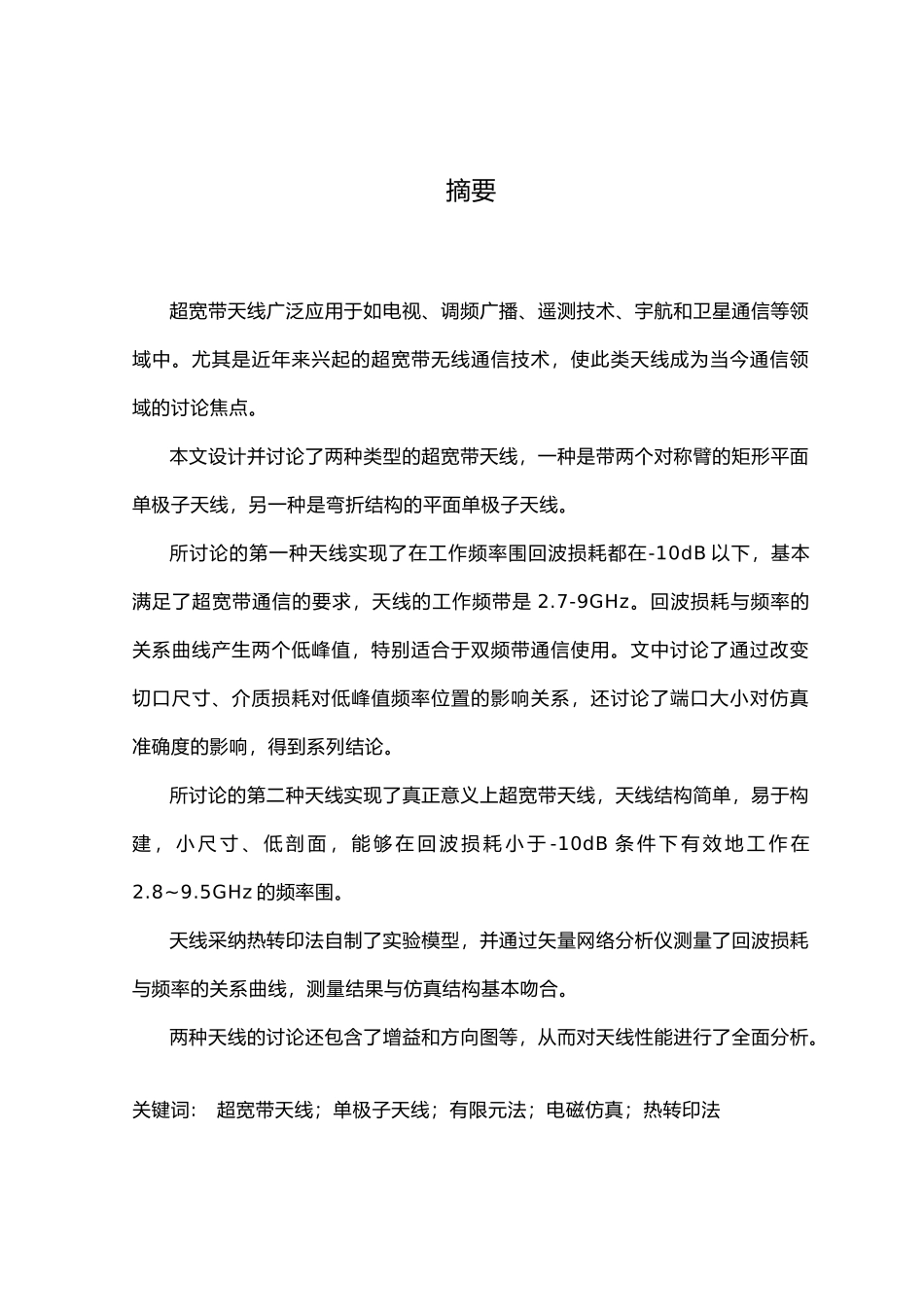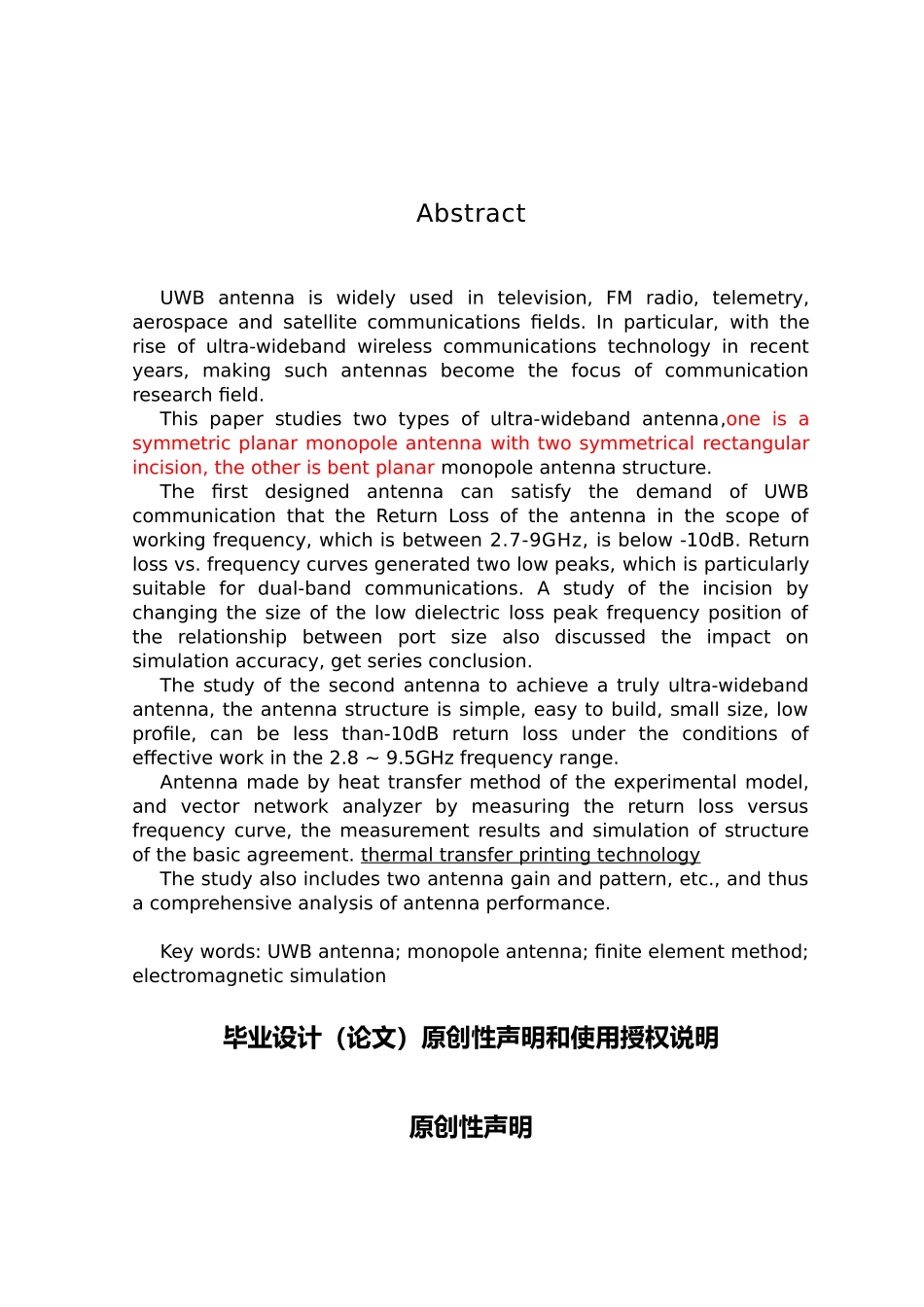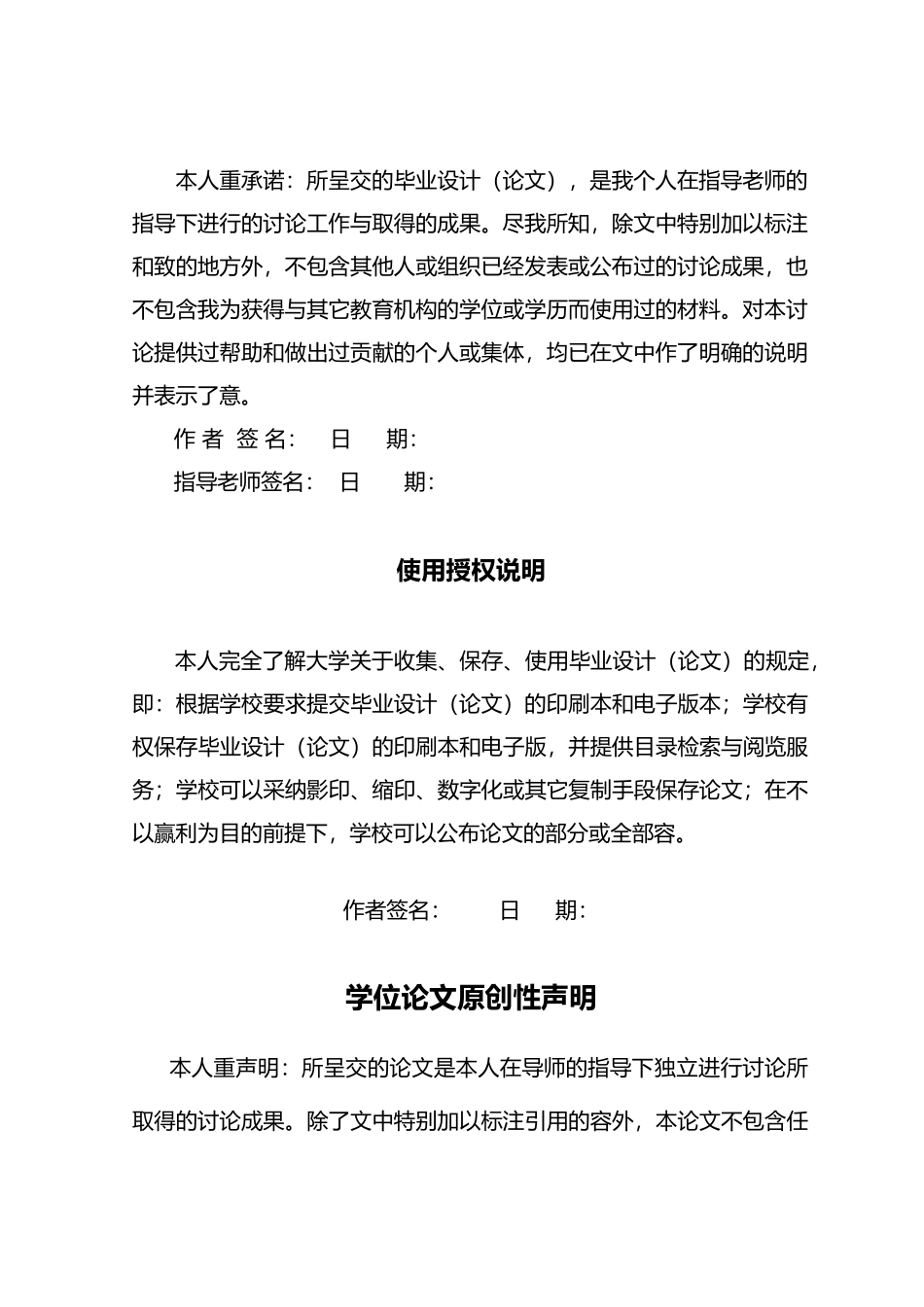摘要超宽带天线广泛应用于如电视、调频广播、遥测技术、宇航和卫星通信等领域中。尤其是近年来兴起的超宽带无线通信技术,使此类天线成为当今通信领域的讨论焦点。本文设计并讨论了两种类型的超宽带天线,一种是带两个对称臂的矩形平面单极子天线,另一种是弯折结构的平面单极子天线。所讨论的第一种天线实现了在工作频率围回波损耗都在-10dB 以下,基本满足了超宽带通信的要求,天线的工作频带是 2.7-9GHz。回波损耗与频率的关系曲线产生两个低峰值,特别适合于双频带通信使用。文中讨论了通过改变切口尺寸、介质损耗对低峰值频率位置的影响关系,还讨论了端口大小对仿真准确度的影响,得到系列结论。所讨论的第二种天线实现了真正意义上超宽带天线,天线结构简单,易于构建 , 小 尺 寸 、 低 剖 面 , 能 够 在 回 波 损 耗 小 于 -10dB 条 件 下 有 效 地 工 作 在2.8~9.5GHz 的频率围。天线采纳热转印法自制了实验模型,并通过矢量网络分析仪测量了回波损耗与频率的关系曲线,测量结果与仿真结构基本吻合。两种天线的讨论还包含了增益和方向图等,从而对天线性能进行了全面分析。关键词: 超宽带天线;单极子天线;有限元法;电磁仿真;热转印法AbstractUWB antenna is widely used in television, FM radio, telemetry, aerospace and satellite communications fields. In particular, with the rise of ultra-wideband wireless communications technology in recent years, making such antennas become the focus of communication research field. This paper studies two types of ultra-wideband antenna,one is a symmetric planar monopole antenna with two symmetrical rectangular incision, the other is bent planar monopole antenna structure. The first designed antenna can satisfy the demand of UWB communication that the Return Loss of the antenna in the scope of working frequency, which is between 2.7-9GHz, is below -10dB. Return loss vs. frequency curves generated two low peaks, which is particularly suitable for dual-band communications. A study of the incision by changing the size of the low dielectric loss peak ...


